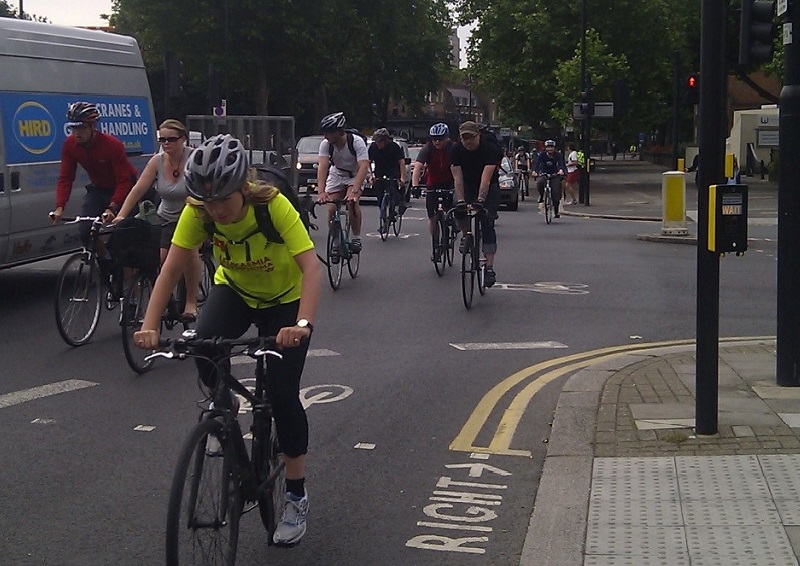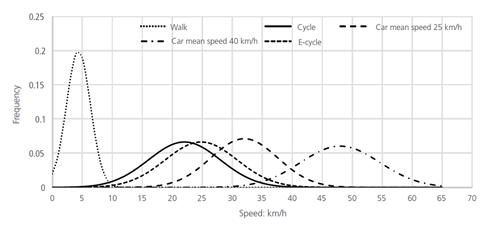John Parkin, professor of transport engineering at UWE Bristol, discusses how engineers can create conditions where anyone and everyone can get on their bikes.

- Updated: 24 Sep 2018
- Author: Professor John Parkin
Designing and building appropriate infrastructure for cycle traffic is a fundamental requirement for increasing levels of cycle use.
If we don’t have any cycleways, there’ll be no significant cycle traffic, just in the same way that if we had no motorways, there’d be no motorway traffic.
And of course, cycle traffic, as opposed to motor traffic, has many advantages, including an ability to sustain local economic vibrancy, enabling social inclusivity and minimising environmental damage.
Designing for cycle traffic
Designs for cycle traffic are naturally at a more human scale than those for motor traffic. Cities are for people, and the fabric of communities should be designed principally for people.
Transport infrastructure that’s designed at the scale of the bicycle creates safer and more liveable cities. In pure transport terms, cycle traffic is much more efficient than motorised traffic.
Environments where the dominant mode is the bicycle are much safer than environments where the dominant mode is much heavier and faster motor traffic.
ICE has published a new guidance book, Designing for Cycle Traffic: International principles and practice, which aims to identify and champion underlying principles for design for cycle traffic drawn from the best international examples.
The problems of standards and ‘custom and practice’
Highway engineering and traffic engineering are both highly regulated in terms of design and management standards.
However, there remains a good deal of ‘custom and practice’ which has built up over the years. It’s these un-regulated aspects of design which have so often, in relation to cycle traffic, resulted in extremely poor outcomes for cyclists.
The worst outcomes are arguably when weak attempts are made to reduce perceptions around the risk posed to cyclists by motor traffic, but with no regard to the underlying fundamental requirements for designing a piece of infrastructure for cycle traffic.
The classic example is suggesting to a cyclist that a shared use footway is adequate.
The book also explores the belief that design standards can hold back innovation.
Sometimes the standards are wrong, and the final chapter of the book looks at further innovations that are needed, but currently not allowed.
Principles
So, what are the principles of design for cycle traffic?
They can be summed up the simple phrase ‘The bicycle is a vehicle capable of speed’. This should be etched onto the desk of every designer involved in designing for cycle traffic, because the implications are huge.
The fact that a cycle is a vehicle means that the full usual traffic engineering specifications of control, warning and guidance are fully provided for the assistance and protection of cycle riders.
The fact that the cycle travels at speed means there’s a ‘design speed’ that designers need to adopt.
As any highway engineer knows, the design speed flows through into every single aspect of the design of a route including: horizontal and vertical curves, widths, and stopping sight distances.
The design speed influences every aspect of design for cycle traffic
A key point is that the mean speed of cycle traffic, at just over 20km/hr is significantly higher than that of pedestrians at around 4km/hr.
Apart from perhaps at destinations, such as central squares and so on, cycle traffic should therefore never normally be mixed with pedestrians.
Also, at the other end of the spectrum, motor traffic on roads with a 30mph (50 km/hr) speed limit has a mean speed (typically 40 km/hr), which again is too different from the speed of cycle traffic for comfortable mixing at anything other than very low motor traffic flows.
These speed differentials are a clear signal that cycle traffic should have its own separated networks, as has been done for many years in The Netherlands.
Attractiveness and comfort
The cycle rider is exposed to the environment through which they travel.
In a car, a driver is cocooned in an environment that can be controlled (air conditioning and sound, for example).
